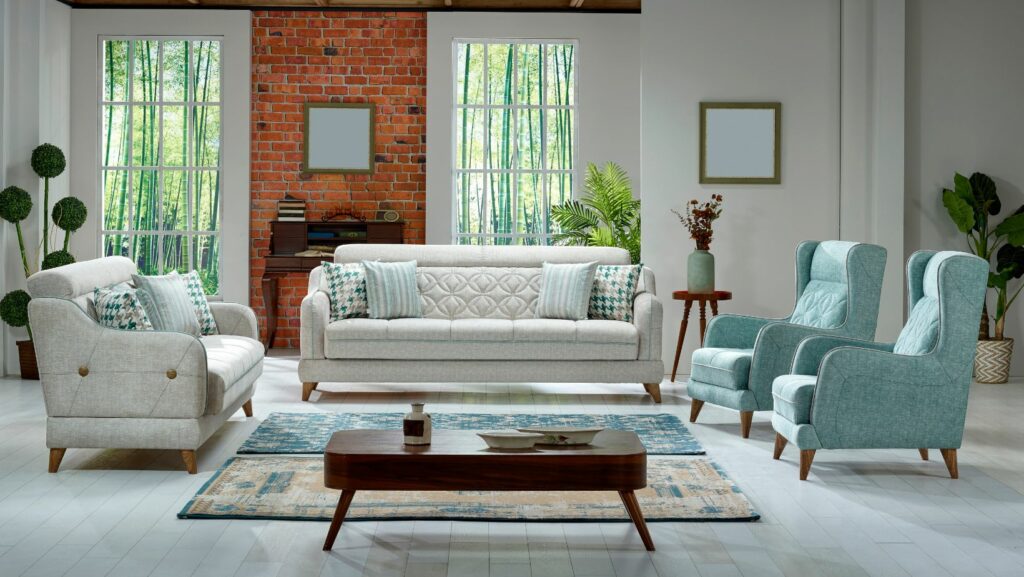Italian home decor embodies a rich tapestry of history and artistry, making it a timeless choice for those looking to infuse their living spaces with elegance and warmth. From the rolling hills of Tuscany to the sleek streets of Milan, Italian design offers a seamless blend of tradition and modernity. Whether it’s the rustic charm of old-world villas or the chic minimalism of contemporary apartments, the Italian aesthetic meets diverse tastes with its unique flair.
As homeowners seek to create inviting and stylish environments, the appeal of Italian home decor continues to grow. This style emphasizes high-quality materials, fine craftsmanship, and a harmonious balance of colors and textures. Exploring this design philosophy not only enhances the visual appeal of a home but also its comfort and functionality, making it a perfect choice for those looking to transform their living spaces.
Italian Home Decor
Influences from Ancient Rome and Renaissance Art
 Italian home decor draws extensively from the country’s rich heritage, particularly from Ancient Rome and the Renaissance period. Elements such as marble flooring, grand columns, and intricate frescoes that were prevalent in these eras are often incorporated into modern designs. These features not only add a classical dimension to the spaces but also evoke a sense of history and durability. Homes often display plaster walls with a textured finish, mimicking the historical architectures found throughout Italy. Further enhancing the aesthetic are Renaissance-inspired art pieces, such as statues and oil paintings, which bring an artistic sophistication to any room.
Italian home decor draws extensively from the country’s rich heritage, particularly from Ancient Rome and the Renaissance period. Elements such as marble flooring, grand columns, and intricate frescoes that were prevalent in these eras are often incorporated into modern designs. These features not only add a classical dimension to the spaces but also evoke a sense of history and durability. Homes often display plaster walls with a textured finish, mimicking the historical architectures found throughout Italy. Further enhancing the aesthetic are Renaissance-inspired art pieces, such as statues and oil paintings, which bring an artistic sophistication to any room.
Regional Differences in Decor Styles
The style of Italian home decor varies significantly from one region to another, reflecting the diverse cultural influences and historical backgrounds across the country. For instance, Tuscan style is renowned for its rustic charm, featuring terracotta tiles, wood beam ceilings, and a warm color palette. In contrast, the Venetian approach is more opulent, emphasizing ornate details, luxurious fabrics, and rich colors like deep reds and golds. Further south, Sicilian homes might include vibrant ceramic tiles and wrought iron accents, elements that reflect the island’s Greek and Arabic historical influences. Each region’s unique style contributes to the overall tapestry of Italian home decor, offering a variety of options for homeowners to choose from, depending on their personal tastes and influences.
Key Features of Italian Home Decor
Use of Color and Texture
 Italian home decor epitomizes the mastery of blending colors and textures to achieve both harmony and visual impact. Earthy tones like terracotta and olive green meld with vibrant hues such as cobalt blue and sunflower yellow, creating dynamic interiors without overwhelming the senses. Texture plays a crucial role, with materials such as rustic wood, smooth marble, and intricate wrought iron being integral. These elements combined ensure each space not only shows depth but also exudes warmth.
Italian home decor epitomizes the mastery of blending colors and textures to achieve both harmony and visual impact. Earthy tones like terracotta and olive green meld with vibrant hues such as cobalt blue and sunflower yellow, creating dynamic interiors without overwhelming the senses. Texture plays a crucial role, with materials such as rustic wood, smooth marble, and intricate wrought iron being integral. These elements combined ensure each space not only shows depth but also exudes warmth.
Furniture and Space Design
The arrangement of furniture and spatial design in Italian decor focuses on functionality blended with artistic flair. Furniture pieces often feature ornate details and fine craftsmanship, with an emphasis on durable woods and metals. Spaces are designed to be open and inviting, promoting social interaction. Luxurious sofas and ornate coffee tables usually act as focal points in living rooms, while spacious kitchens often incorporate large islands and ample seating, facilitating both cooking and conversation. This careful consideration of both utility and beauty exemplifies the Italian approach to interior design.
Modern Italian Home Decor Trends
Blending Traditional with Contemporary
 Modern Italian home decor trends often focus on merging the old with the new, creating interiors that are both stylish and deeply rooted in Italian culture. Designers integrate classic elements such as ornate woodworking and decorative moldings with modern, clean lines and minimalistic furniture. This juxtaposition not only honors Italy’s rich architectural heritage but also meets the practical needs of today’s lifestyle. For instance, a traditional Venetian chandelier can be paired with a contemporary steel dining table, bringing together two eras in a harmonious space. Such combinations allow homeowners to enjoy the luxury and beauty of antique pieces while benefiting from the functionality and simplicity of modern design.
Modern Italian home decor trends often focus on merging the old with the new, creating interiors that are both stylish and deeply rooted in Italian culture. Designers integrate classic elements such as ornate woodworking and decorative moldings with modern, clean lines and minimalistic furniture. This juxtaposition not only honors Italy’s rich architectural heritage but also meets the practical needs of today’s lifestyle. For instance, a traditional Venetian chandelier can be paired with a contemporary steel dining table, bringing together two eras in a harmonious space. Such combinations allow homeowners to enjoy the luxury and beauty of antique pieces while benefiting from the functionality and simplicity of modern design.
Eco-Friendly and Sustainable Materials
In response to growing environmental concerns, Italian home decor now emphasizes sustainability and the use of eco-friendly materials. Innovators in the Italian design sector are incorporating materials like reclaimed wood, recycled glass, and non-toxic paints into their projects. These materials are not only better for the environment but also add a unique, rustic charm that is highly prized in modern decor. For example, furniture made from repurposed wood can connect a room with nature and history, yet maintain a fresh, contemporary feel. Additionally, sustainable practices in Italian decor extend to energy-efficient lighting fixtures and appliances, reducing the ecological footprint while maintaining high aesthetic standards.

